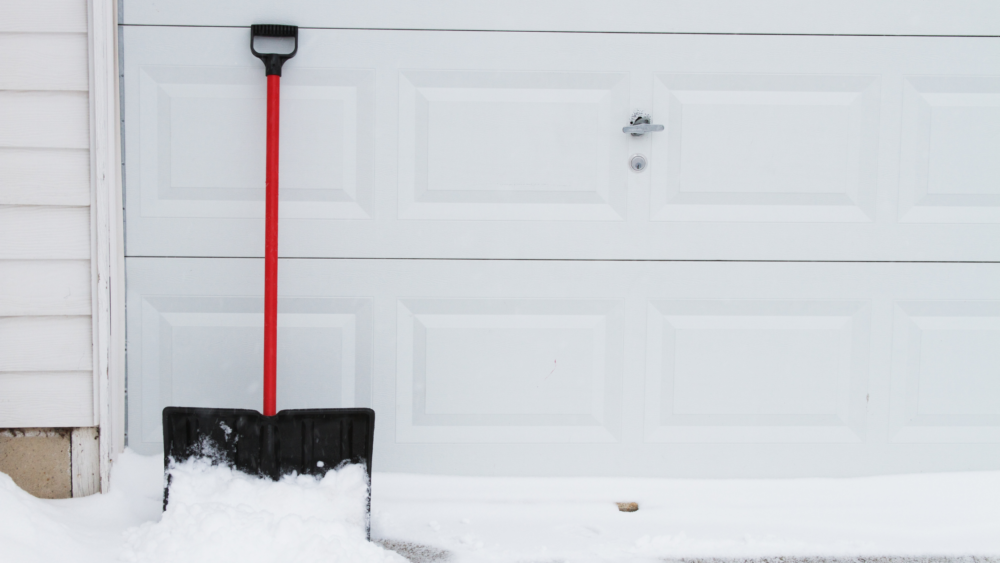Winter brings its own set of challenges, and one of the trickiest to navigate is keeping walkways and driveways clear of ice. **What you need to know about snow melt products** could be the game-changer for many facing icy conditions. In this piece, we dive into everything from traditional rock salt options to more environmentally friendly alternatives like calcium magnesium acetate.
Navigating the maze of snow melt solutions, we’ll consider your pavement’s character, local climate nuances, and eco-sensitivity to pinpoint an ideal match. Additionally, discover how to utilize these solutions in a manner that minimizes harm and avoids squandering resources.
So whether it’s ensuring safety on slippery surfaces or protecting plant life around your home during cold temperatures, stick around. You’re about to learn how simple changes in your approach can make a big difference this winter.
Understanding the Basics of Snow Melt Products
What Are Snow Melt Products?
Snow melt products are your winter weather warriors, fighting off ice and snow to keep surfaces safe. They come in various forms like pellets, liquids, and flakes. Each type is designed to tackle freezing temperatures by lowering water’s freezing point. By acting in this way, it ensures that snow doesn’t linger beyond its welcome, much like a guest who’s stayed too long at a festive gathering.
The most common types include rock salt (sodium chloride), calcium chloride, magnesium chloride, and more eco-friendly options such as calcium magnesium acetate. While some people might just see them as “salt,” there’s quite a bit of science packed into each granule or drop that hits the ground.
How Ice Melt Works
Ice melt works by creating a brine solution when it contacts moisture, which lowers the freezing temperature of water on surfaces. This process is not just about melting what’s already there but also preventing new ice formation—a preemptive strike against slip-and-fall accidents waiting to happen.
Different materials work better under different conditions; for example, Calcium Chloride shines in extremely cold temperatures thanks to its ability to quickly generate heat upon contact with ice. On the flip side, Magnesium Chloride offers a less corrosive option suitable for areas with vegetation nearby since it’s gentler on plant life while still effective at combating icy conditions.
In choosing between these fighters against frostbite-inducing floors, consider factors like environmental impact alongside cost per application—balancing budget constraints with safety needs and ecological considerations ensures you make an informed decision tailored specifically for your situation.
Types of Snow Melt Products Available
Rock Salt vs. Eco-Friendly Options
When winter weather hits, the battle against ice begins. Rock salt, also known as sodium chloride, has been a go-to for years because it’s cheap and effective at melting ice by lowering the freezing point of water. But did you know calcium chloride and magnesium chloride are even more powerful? These melt products work faster and at lower temperatures compared to traditional rock salt.
However, not all heroes wear capes – some just protect your driveway without harming the planet. Enter Calcium Magnesium Acetate (CMA), an environmentally friendly option that stands out among different types of snow melt products. Unlike its counterparts, CMA is less corrosive and safer for plant life around your home.
If you’re leaning towards green solutions but worried about effectiveness, don’t be. Zimmerman Mulch’s guide on eco-friendly deicing options reveals that these alternatives can hold their own in icy conditions while minimizing environmental damage. From liquid brine solutions that prevent ice formation to potassium acetate-based liquids offering a low-corrosion solution suitable for various surface types – there’s no shortage of choices.
Selecting between rock salt and its greener cousins boils down to balancing cost per application with environmental impact alongside average temperature considerations in your area. Remember: whether it’s solid ice melt or liquid form applications, using any deicing product requires understanding both its strengths and limitations based on specific needs such as surface type or desired melting temperature range.
How to Choose the Right Snow Melt Product
Finding the perfect snow melt product can feel like trying to pick a needle out of a haystack. But fear not, because we’re here to help you make an informed decision based on your specific needs and conditions.
Understanding Your Environment
The first step in choosing the right ice melt is understanding your environment. If you live in an area with extremely cold temperatures, products containing calcium chloride or magnesium chloride might be your best bet due to their low effective temperature range. Upon encountering ice, these substances rapidly initiate a reaction that produces warmth, thereby outpacing ordinary salt in reducing water’s freezing threshold amidst frosty surroundings.
However, if environmental impact concerns you as much as melting ice does, consider eco-friendly options like calcium magnesium acetate (CMA) or potassium acetate. These alternatives are gentler on plant life and less corrosive than other deicers. For insights into environmentally friendly options that won’t harm your garden or walkway greenery, check this out.
Balancing Cost and Efficiency
Let’s talk turkey—cost per application matters when selecting an ice melt product. While some advanced formulas may offer superior melting power at lower temperatures, they often come at a higher price point. Sodium chloride (rock salt), for instance, remains one of the most cost-effective solutions available but loses its efficacy below 20°F (-6°C). It’s all about finding that sweet spot between performance and price for your particular situation.
In conclusion, remember these key factors: average temperature in your region, road surface type around your home or business place, and potential environmental impacts should guide your choice towards picking just the right snow melt option. By weighing these considerations carefully, you’ll ensure safety through winter months without breaking the bank.
Application Techniques for Maximum Efficiency
Applying ice melt effectively isn’t just about tossing it on the ground and hoping for the best. Mastering the craft of applying ice melt not only conserves resources and shields nature but also economizes your efforts, transforming a mundane task into an efficient artistry.
Proper Application Techniques
To apply ice melt efficiently, start before the storm hits. Pre-treatment measures create a barrier between the surface and snow or ice, making removal easier later on. When applying ice melt products like rock salt or calcium chloride magnesium chloride mixtures during or after snowfall, ensure even distribution to avoid waste and minimize harm to nearby plant life.
Selecting the right equipment significantly enhances how effectively substances are spread. Using a handheld spreader for small areas or a walk-behind spreader for larger spaces can help achieve uniform coverage without over-application, which is essential not only from a cost perspective but also to mitigate potential environmental impact.
Pre-Treatment Measures
Incorporating pre-treatment strategies into your winter weather arsenal could be a game-changer. Applying liquid solutions such as brine—a mixture of salt (sodium chloride) and water—before freezing temperatures set in prevents snow from bonding with surfaces such as driveways, parking lots, sidewalks, etc., thereby reducing labor costs associated with mechanical removal methods while ensuring safer conditions sooner than traditional methods allow.
This approach not only requires less product overall due to its preventative nature but also works at lower temperatures where some solid forms may lose their efficacy. For those seeking eco-friendlier options, potassium acetate-based liquids offer an effective temperature range suitable down to extremely cold climates without causing harm to either roadways or the environment alike.
The Science Behind Ice Melting Technology
When winter strikes, the battle against icy driveways and sidewalks begins. But have you ever wondered how a handful of granules can make ice vanish? In essence, it’s the fascinating interplay of chemical reactions that makes ice disappear.
What Are Snow Melt Products?
Snow melt products are like magic potions for your pavement, but instead of eye of newt or wing of bat, they contain chemicals such as sodium chloride (rock salt), calcium chloride, magnesium chloride, potassium acetate, and calcium magnesium acetate. Each ingredient has its own special role in lowering the freezing point of water to keep surfaces clear.
This melting marvel happens through a process called exothermic reaction when using compounds like calcium chloride; it not only melts ice but also generates heat. Meanwhile, others work hygroscopically by drawing moisture from the environment to form a liquid brine that further speeds up melting.
How Ice Melt Works
The science behind snow melting revolves around reducing water’s freezing temperature. When applied correctly (Zimmerman Mulch), these substances break bonds within ice molecules at temperatures where plain old H2O would normally freeze solid again. For instance, rock salt is effective until about 20°F while more advanced concoctions lower this threshold even further.
Liquid forms prove especially adept in extremely cold conditions due to their ability to spread evenly and act quickly – vital traits when fighting Mother Nature’s frosty temper tantrums. Rasevic notes that accuracy in application means less environmental impact and greater efficiency—a win-win during those long winter months.
Premium Ice Melt Solutions for Road Safety
Traditional methods like rock salt have long been popular, but they’re not always kind to our environment or effective in extremely cold temperatures.
Enter SISCU premium ice melts, a game-changer in battling icy conditions on roads and parking lots. Crafted for peak performance and minimal environmental footprint, these top-tier deicing solutions marry effectiveness with eco-consciousness. SISCU’s premium ice melts bring to the table a sophisticated concoction that not only accelerates melting but also functions effectively in chillier conditions, unlike traditional methods.
Rock Salt vs. Eco-Friendly Options
The most common types of snow melt products include sodium chloride (rock salt), calcium chloride, magnesium chloride, potassium acetate, and calcium magnesium acetate—each with its unique melting temperature range and environmental considerations.
Sodium chloride is inexpensive but can harm plant life; meanwhile, eco-friendly alternatives like Calcium Magnesium Acetate present less risk to vegetation without compromising performance. These eco-conscious options not only keep snow from clumping but also take care to respect the nearby natural habitats.
To choose the right product for your needs, Zimmerman Mulch suggests considering factors such as average temperature during use times because certain products require colder climates than others to be effective. Moreover, contacting Rasevic can help you get professional advice tailored specifically for your situation regarding cost per application based on surface type covered or desired environmental impact level.
Environmental Considerations When Using Ice Melts
When winter weather strikes, keeping walkways and driveways clear of ice is a top priority. But have you ever stopped to think about the environmental impact of the ice melt products you’re using? It’s time to dig into how these necessary evils can be managed more eco-consciously.
Eco-Friendly Options vs. Traditional Salt Products
The most common deicing material is rock salt, also known as sodium chloride. While effective at melting ice, it poses significant threats to plant life and local water sources due to its high salinity levels. On the flip side, calcium magnesium acetate stands out as an environmentally friendly option that prevents snow and ice particles from sticking together without harming nearby flora or fauna.
Incorporating alternatives like calcium magnesium acetate into your winter arsenal not only protects your garden but also helps safeguard our precious ecosystems by reducing runoff pollution—a win-win for everyone involved.
Selecting Plant Life-Friendly Melt Products
Choosing the appropriate de-icer goes beyond finding what melts ice most efficiently; it’s vitally important to think about how these choices will impact the vegetation around us. Chemical compounds like potassium chloride may offer a lower freezing point than traditional sodium chloride options yet still pose risks if not used judiciously.
To minimize potential harm while battling icy conditions effectively, explore liquid brine solutions derived from less corrosive materials such as potassium acetate or even beet juice mixtures known for their gentle touch on vegetation without compromising melting efficiency in cold temperatures.
For further insights into making eco-friendly choices this winter season, Zimmerman Mulch offers valuable advice on selecting suitable products that align with both safety concerns and environmental considerations.
Practical Tips for Storing and Handling Ice Melts
Safe Storage Practices
Maintaining the efficacy of your deicing materials starts with proper storage. First off, keeping these compounds dry is non-negotiable. Why? Because moisture can trigger a premature reaction, essentially wasting your product before it ever hits the pavement. This means storing bags of ice melt off the ground in a cool, dry place—think shelves in a garage or covered area outside.
The second key point involves sealing open bags tightly after use to prevent exposure to humidity. For bulk quantities not originally packaged for long-term storage, transferring them into sealable containers can save you from discovering a solid block when winter hits again.
Effective Application Methods
To maximize efficiency while minimizing waste and environmental damage during application requires some know-how. Pre-treatment measures are golden here; applying ice melt just before snowfall prevents ice formation at lower amounts than treating existing ice does.
The ease of application varies by form—with liquid solutions allowing for more accurate spreading but needing specialized equipment like sprayers for best results. On the other hand, granular forms work well with basic spreaders or even by hand (with gloves), though they may need breaking up if clumped due to moisture absorption during improper storage.
A crucial consideration is choosing an environmentally friendly option that suits both your needs and those of mother nature—a task easier said than done without guidance from trusted sources such as Zimmerman Mulch’s insights on eco-friendly deicers. Keeping in mind the equilibrium between utility and environmental stewardship guarantees secure passage across icy terrains while preserving our Earth’s biological networks.
FAQs in Relation to What You Need to Know About Snow Melt Products
What is the most effective snow melt?
Calcium chloride tops the chart for its fast-acting, low-temperature prowess, melting ice quicker than other agents.
At what temperature does snow melt not work?
Snow melts lose their mojo below -20°F. At these chilly temps, even the best struggle to cut through ice.
What chemicals are in snow melt?
Snow melts pack a mix of calcium chloride, magnesium chloride, sodium chloride, and sometimes urea to beat back ice.
What makes snow melt pet safe?
Pet-safe melts ditch traditional salts for gentler ingredients like magnesium chloride or urea that won’t harm furry friends’ paws.
Conclusion
Mastering winter safety starts with understanding what you need to know about snow melt products. This guide aimed to arm you with that knowledge, from picking the right ice melt for your driveway to applying it without harm.
Picking the right product matters. Opting for something like traditional rock salt or leaning towards a greener solution such as calcium magnesium acetate can greatly influence not only how well the ice melts but also the wellbeing of our surroundings.
Applying these products wisely saves money and protects nature. By acting proactively with pre-treatment, we can stop ice in its tracks early on, ensuring that walkways become secure more quickly.
To wrap up: choosing wisely means acting wisely. With this info in hand, tackling icy conditions becomes simpler and smarter. And remember, every small step towards using snow melt products responsibly counts big time for our planet’s future.




